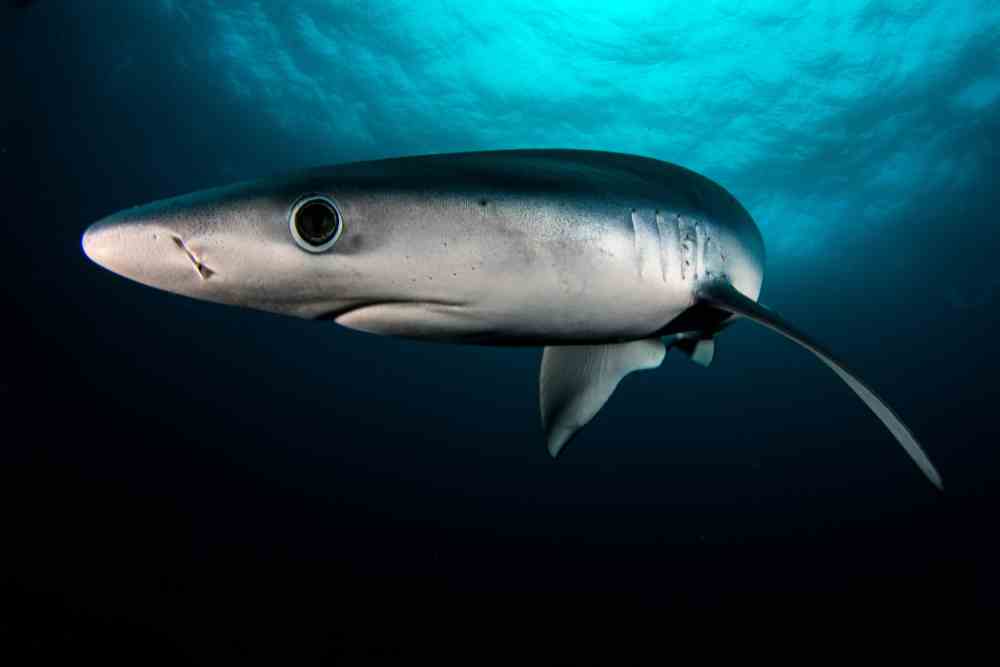Dolphins are considered one of the friendliest animals in the ocean, but do sharks fear them?
Sharks are apex predators and they usually prey on smaller fish but they avoid dolphins and prefer to stay away from dolphins.

Are Sharks Afraid of Dolphin?
A study was carried out by researchers at the University of Western Australia, which used data from over 100 shark sightings to analyze how the animals interacted with dolphins.
The results showed that sharks tended to avoid dolphins, with only 5% of cases involving contact between the two species.
While it’s unclear why sharks prefer to steer clear of dolphins, the researchers believe it may be because dolphins are known to be aggressive predators. As such, sharks may see them as a threat and choose to stay away.
What Are Sharks Afraid of?
Sharks are apex predators and as such, they have very few things to fear in the ocean. They’re not afraid of other fish, whales, or dolphins. They’re not even afraid of humans. But there are a few things that can make a shark run away in terror.
One thing that sharks are afraid of is being trapped in a small space. If they’re in a narrow underwater canyon and they can’t get out, they’ll start swimming frantically to try to escape.
They’re also afraid of fishing nets. When they get caught in a net, they can’t move and they often suffocate.
Another thing that sharks are afraid of is being hunted by humans. Sharks have been hunted for their meat, fins, and oil for centuries. Some species have been hunted so much that they’re now endangered.
Interaction Between Bottlenose Dolphins and Sharks
In the Western North Atlantic, bottlenose dolphins (Tursiops truncatus) are common in areas where tiger sharks (Galeocerdo cuvier) are also found.
These interactions can include predation by sharks on dolphins and competition for food resources.
The purpose of this study was to determine if the availability of food and risk of predation by tiger sharks influenced habitat use by bottlenose dolphins.
Dolphins were tracked using satellite tags from March-June 2010 in an area near Jacksonville, Florida that has a high density of both predators.
The results showed that when there was a higher availability of food, dolphins were more likely to be found in areas with lower shark predation risk.
This suggests that the presence of tiger sharks influences dolphin habitat use.
References
- Edwin J. Parker, Russell A. Hill, Nicola F. Koyama, Behavioral responses to spatial variation in perceived predation risk and resource availability in an arboreal primate, Ecosphere, 10.1002/ecs2.3945, 13, 2, (2022).
- Fernando Félix, Jaime E. Fernández, Anaid Paladines, Ruby Centeno, Juan Romero, Santiago F. Burneo, Habitat use of the common bottlenose dolphin (Tursiops truncatus) in the Gulf of Guayaquil, Ecuador: Management needs for a threatened population, Ocean & Coastal Management, 10.1016/j.ocecoaman.2022.106174, 223, (106174), (2022).
- Daniella Hanf, Amanda Jane Hodgson, Halina Kobryn, Lars Bejder, Joshua Nathan Smith, Dolphin Distribution and Habitat Suitability in North Western Australia: Applications and Implications of a Broad-Scale, Non-targeted Dataset, Frontiers in Marine Science, 10.3389/fmars.2021.733841, 8, (2022).
- Alexis L Levengood, Kasha Strickland, Vivienne Foroughirad, Janet Mann, Romane H Cristescu, Ewa Krzyszczyk, Céline H Frère, Heterogeneity in resource competition covaries with individual variation in long-term social relationships, Behavioral Ecology, 10.1093/beheco/arac037, (2022).
- Kelly Melillo‐Sweeting, Maria Maust‐Mohl, Matthew J. Smukall, Examining shark bite scars on dolphins off Bimini, The Bahamas: Comparisons between bottlenose and Atlantic spotted dolphins, Marine Mammal Science, 10.1111/mms.12840, 38, 1, (18-28), (2021).
- Agathe Serres, Wenzhi Lin, Eric E. G. Clua, Mingli Lin, Mingming Liu, Songhai Li, Evidence of interactions between sharks and Indo‐Pacific humpback dolphins (Sousa chinensis) in the northern South China Sea, Marine Mammal Science, 10.1111/mms.12902, 38, 3, (1262-1271), (2021).
- Krista Nicholson, Lars Bejder, Neil Loneragan, Niche partitioning among social clusters of a resident estuarine apex predator, Behavioral Ecology and Sociobiology, 10.1007/s00265-021-03091-4, 75, 12, (2021).
- Krista Nicholson, Neil Loneragan, Hugh Finn, Lars Bejder, Social, spatial and isotopic niche partitioning identify an estuarine community of bottlenose dolphins as a discrete management unit, Aquatic Conservation: Marine and Freshwater Ecosystems, 10.1002/aqc.3736, 31, 12, (3526-3542), (2021).
- CS Sherman, MR Heupel, SK Moore, A Chin, CA Simpfendorfer, When sharks are away, rays will play: effects of top predator removal in coral reef ecosystems, Marine Ecology Progress Series, 10.3354/meps13307, 641, (145-157), (2020).
- Conrad W. Speed, Matthew J. Rees, Katherine Cure, Brigit Vaughan, Mark G. Meekan, Protection from illegal fishing and shark recovery restructures mesopredatory fish communities on a coral reef, Ecology and Evolution, 10.1002/ece3.5575, 9, 18, (10553-10566), (2019).
- Kim N. Holland, James M. Anderson, Daniel M. Coffey, Bonnie J. Holmes, Carl G. Meyer, Mark A. Royer, A Perspective on Future Tiger Shark Research, Frontiers in Marine Science, 10.3389/fmars.2019.00037, 6, (2019).
Crossref